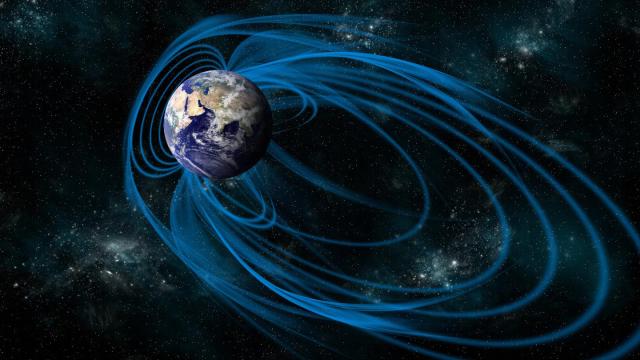Can The Universe Turn Stars Back Into Planets?
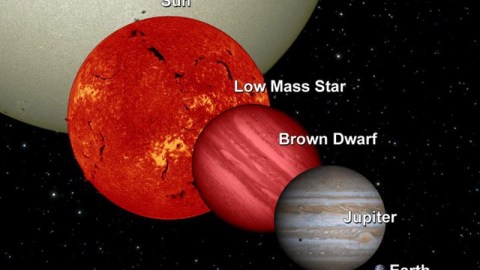
We’ve already observed three cases where it’s happened.
When you look at an object in space, it’s pretty easy to tell if it’s a star or a planet. Stars are large enough collections of mass — mostly hydrogen, with abundant amounts of helium, and just a few percent of everything else combined — that their cores reach temperatures exceeding 4 million K, enough to start fusing raw protons into heavier elements. Planets, on the other hand, can be either rocky or gassy, but don’t have enough mass to begin fusing hydrogen into helium, and don’t reach sufficient temperatures in their core to initiate nuclear fusion reactions.
And yet, if you could somehow steal enough mass away from a true star, one that was fusing light elements into heavier ones right before your eyes, you could bring those nuclear reactions to a swift end. In fact, if you took enough mass away, you might even be able to bring the total mass of the star down to under about ~7.5% the mass of our Sun, which marks the threshold between the lowest-mass star and the highest-mass planet/brown dwarf. It might seem like an unlikely pathway, as there aren’t very many things capable of subtracting so much mass from something as compact as a star. Not only does the Universe have a way to do it, but we think we have not just one, but three examples already. Here’s the science of how it works.
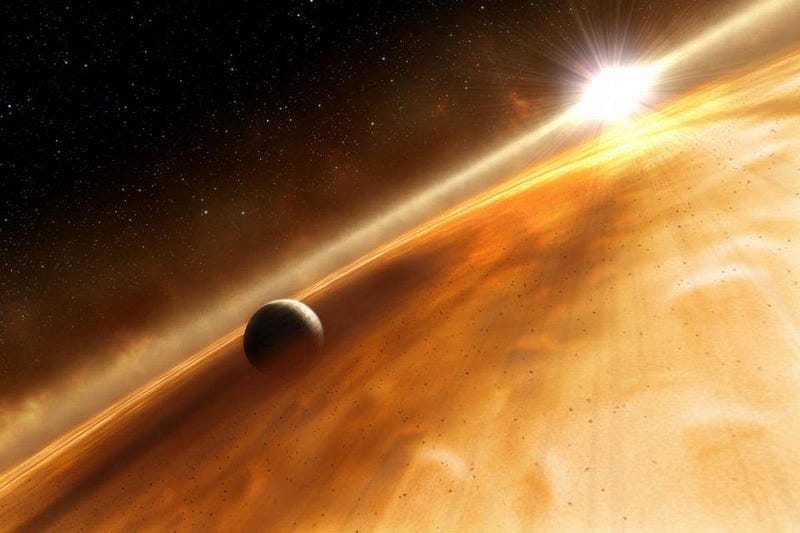
When stars form, they don’t simply result in solar systems like our own: with a central star orbited by smaller bodies like planets, moons, asteroids and more. Some solar systems form with properties like our own, but that only accounts for about ~50% of all the stars that form. The remaining ~50% are bound up in multi-star systems: binaries, trinaries, and systems with even greater numbers of stars. In fact, based on the latest data from RECONS, the REsearch Consortium On Nearby Stars, of all the stars and star systems measurable within 25 parsecs (about ~82 light-years):
- 51.8% of stars are in singlet systems,
- 34.4% of stars are in binary systems,
- 10.3% are in trinary systems,
- 2.6% are in quaternary systems,
- and the remaining 0.9% are in systems with five or more stars.
In general, the systems with singlet stars are predictable, at least in terms of stellar evolution. The central star will burn through the hydrogen fuel in its core once it initiates nuclear fusion, and will continue to do so until the core hydrogen becomes depleted. At this point, the rate of fusion drops, and the outward radiation pressure is no longer sufficient to hold the star’s core up against the force of gravity.
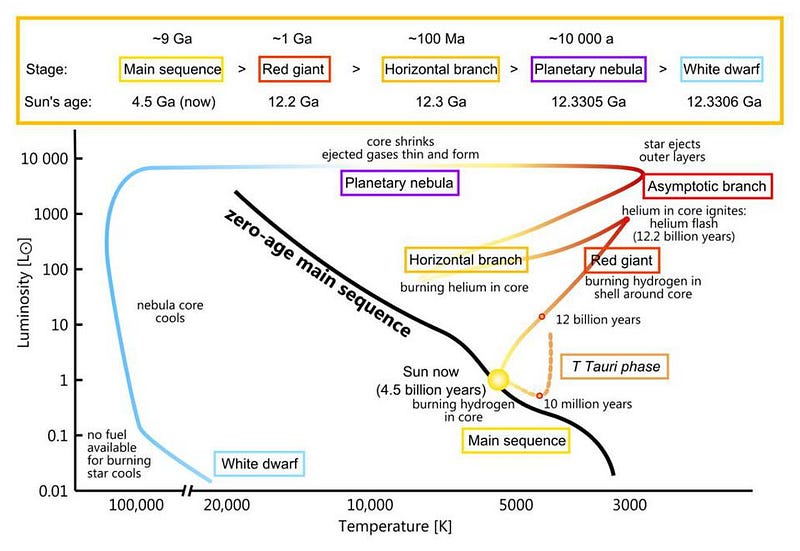
What happens next is a series of important events. Inside, the core begins to contract, as the inward gravitational force starts to overcome the outward radiation pressure. Just like a dropped ball converts gravitational potential energy into kinetic energy, the contraction of the star’s core converts gravitational potential energy into kinetic energy, and collisions between particles in the core quickly convert that kinetic energy into heat. As the core contracts, therefore, it also heats up.
This heat propagates outward from within the star, and causes the region where fusion can occur to expand. While the mostly helium core contracts and heats up, a thin, shell-like layer of hydrogen around it begins to fuse into helium, injecting even more heat into the star. The outermost layers, meanwhile, begin to swell and expand. Over time, the star will swell into a subgiant, while the inner core gets hotter and hotter.
Eventually, the inner core reaches a high enough temperature that helium can begin fusing into carbon, while the outer layers become so diffuse that the star has now evolved into a red giant.
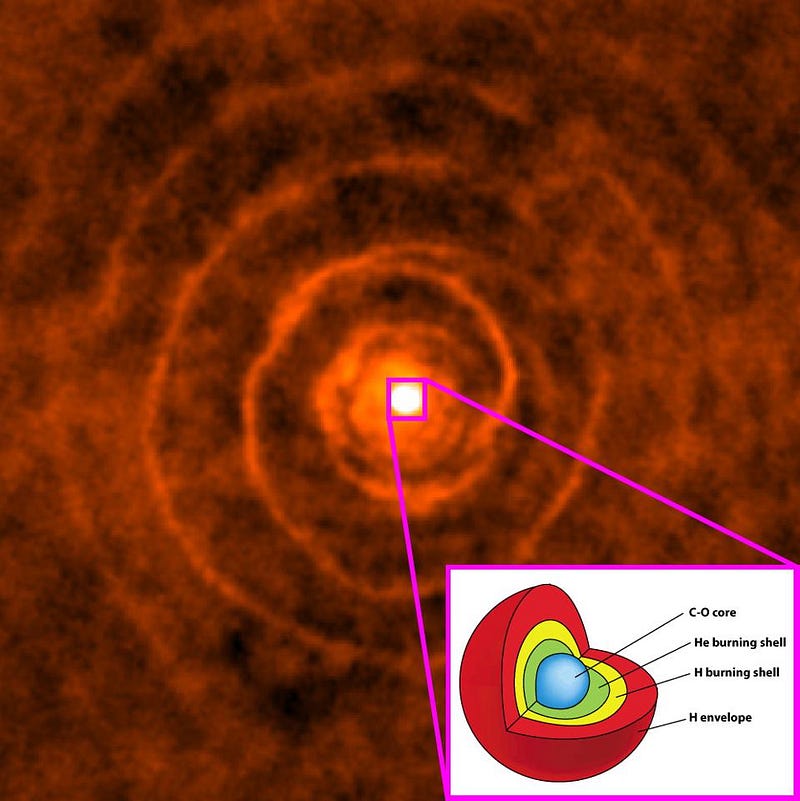
All singlet stars born with at least ~40% the mass of our Sun will someday have this occur: their cores run low on hydrogen, the core contracts and heats up, the heat radiates outward, a shell of hydrogen surrounding the core begins to fuse, the outer layers expand, and eventually helium fusion ignites in the inner core while the outer layers fully swell so that the star becomes a red giant.
For stars whose initial mass is below about ~8 times the mass of our Sun, they’ll eventually blow off their outer layers while their core contracts down into a white dwarf. For stars whose initial mass is above that mass threshold, they’ll go through a series of additional fusion reactions, with a cataclysmic supernova eventually ensuing. The end result of those stars is that a neutron star or a black hole is what’s left over, post-cataclysm.
Regardless of what the fate of the star is, it always produces a stellar remnant that’s less massive, but denser and far more concentrated than the predecessor star that came before.
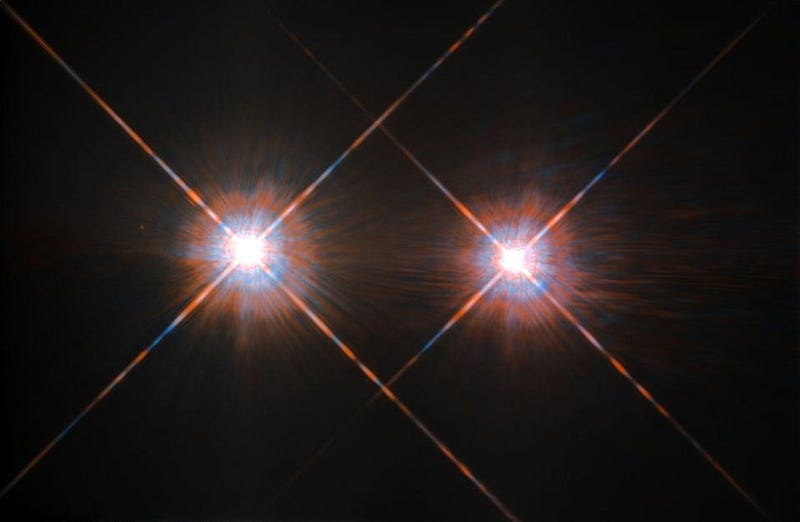
The last piece of the puzzle — at least for singlet star systems — is time. We need to understand how long a star lives before it goes through these various phases, and thankfully, even though every star is different, there’s a single factor that determines every stage of evolution: mass.
The more massive your star is, assuming it only goes through its standard life cycle and that nothing else comes along to disturb and disrupt it, merge with it, or siphon mass off of it, the faster it will reach every one of these milestones.
- A more massive star runs out of hydrogen in its core faster than a less massive star.
- A more massive star will initiate hydrogen shell fusion and become a subgiant star earlier than a less massive star.
- A more massive star will swell to become a red giant and initiate helium fusion in less time than a less massive star.
- And a more massive star will fully evolve to form a stellar remnant — a white dwarf, neutron star, or black hole — earlier than a less massive star.
Although these stars will lose a significant portion of their mass during all of these phases, with the final remnant typically only possessing a fraction of the mass the star was born with, the biggest takeaway is that the more massive your star is, the quicker it will evolve to produce its end state: a compact object that’s the remnant of the initial star.
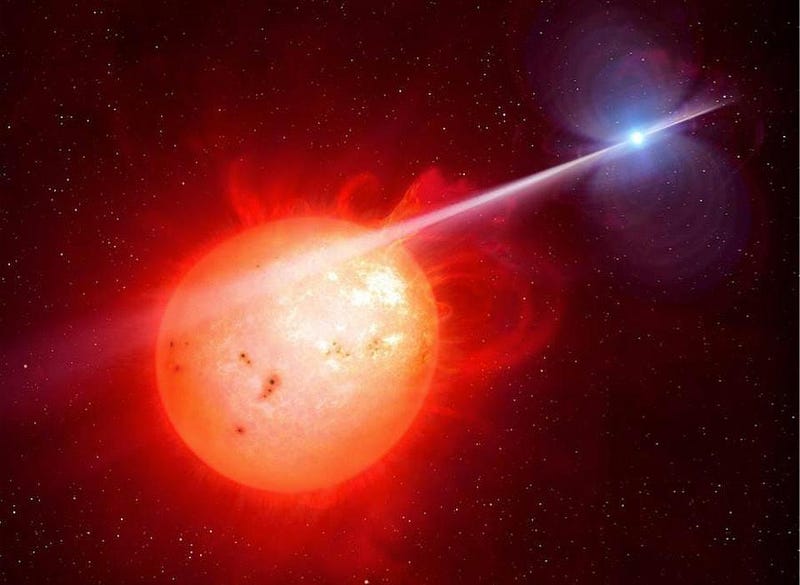
But for nearly half of the stars present in the Universe, they don’t exist in isolation, orbited only by planets. Instead, they’re simply one member of a multi-star system: binaries, trinaries, or even more complex systems. These systems come in many different varieties, with some stars in very tight orbits with one another, others in more moderate orbits, and still others with very wide, long-period orbits. Some systems have multiple stars of nearly identical masses; others have lopsided mismatches between the component stars.
Some systems — the ones with three or more stars — might display many different properties all at once. You could have a trinary system where two high-mass members are in close binary orbits, while the third member has a lower mass and a much wider orbit. You could have quaternary system known as a double-double: where two higher-mass members and two lower-mass members each make their own tight binary system, but the two binary systems are bound together in a moderate or wide orbit. You can even have a chaotic system where the lowest-mass, most loosely-held member gets ejected, leaving the remaining members more tightly bound to one another.
However, no matter what your system looks like, if there’s more than one star in it, the member that’s born with the most mass will pretty much always run through its life cycle and become a stellar remnant first.
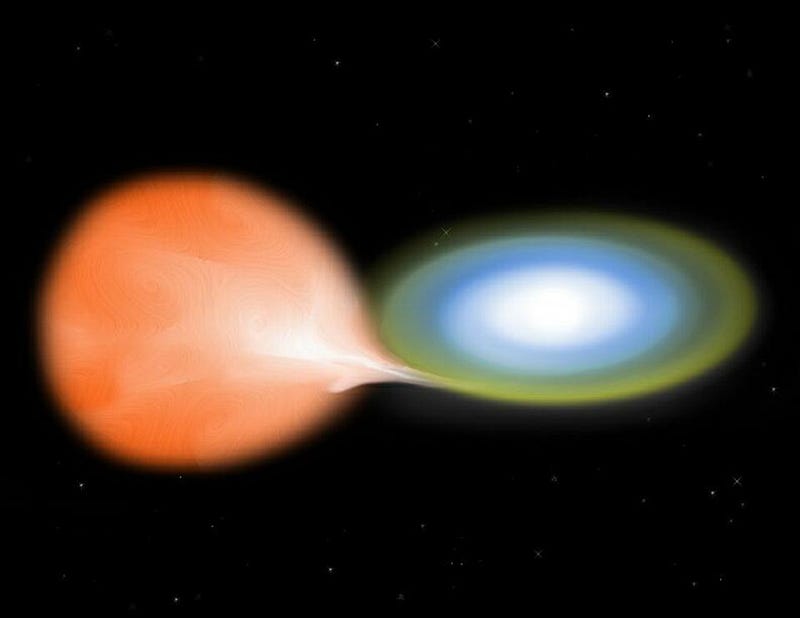
Once one member becomes a stellar remnant, you won’t want to get too close to it. With an enormous amount of mass now occupying a very small volume in space, the force of gravity outside of this object can often exceed the force of gravity on the surface of a nearby, passing object. When an object gets too close to a dense, concentrated mass like a stellar remnant, a number of important phenomena can occur.
- Tidal disruption: where the object itself is torn apart either wholly or partially by the differential forces acting on different parts of the object.
- Merging/swallowing: where the stellar remnant gets subsumed by the larger, less-dense structure, either sinking to its center or triggering a cataclysmic thermonuclear reaction.
- Siphoning: where the nearby object, with a much lower density, starts transferring mass to the stellar remnant.
While tidal disruption events can often result in a tremendous release of energy, and mergers can either trigger certain types of supernovae or can form exotic entities like Thorne-Zytkow objects, the siphoning option is what’s most commonly expected for the tightest binary systems. (Or larger systems where the two closest members can be treated as a binary.)
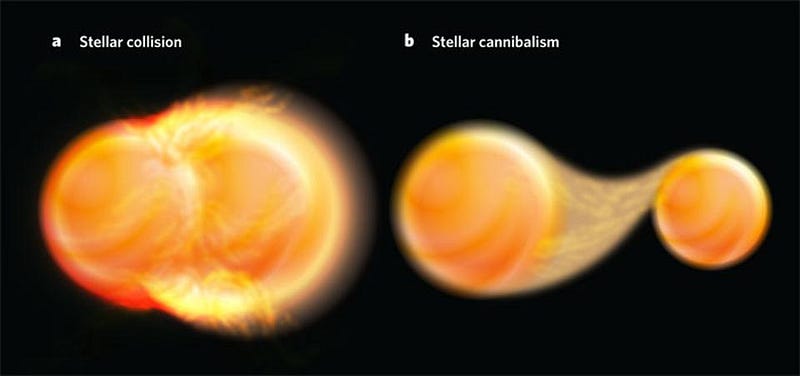
Siphoning will occur whenever a stellar remnant and a larger-volume, lower-density object (like a star) get close enough to one another. There’s a certain “closeness” where, once you achieve it, the matter on the outer edge of the larger-volume, lower-density object will experience a greater gravitational pull towards the stellar remnant than it will feel towards the star it’s actually a part of. Although there are many details one could dive into — the Hill sphere, the Roche lobe, etc. — the basic physics is simple: when you have two objects that come into close-enough contact one another, the one with the stronger gravitational pull will steal mass from the one with the weaker gravitational pull.
The most severe but still common example is where two stars of somewhat different masses start off in a binary orbit. One of them will finish its life cycle first, becoming a stellar remnant. The second, less massive one will then run out of fuel in its core, start to expand, and eventually transform into a red giant. With such a large size and such diffuse outer layers, the red giant freely and easily gives up the mass from its outer layers to the remnant.
If the remnant is a white dwarf, this can repeatedly trigger a nova on the white dwarf’s surface, or even a type Ia supernova if enough mass collects on the stellar remnant.
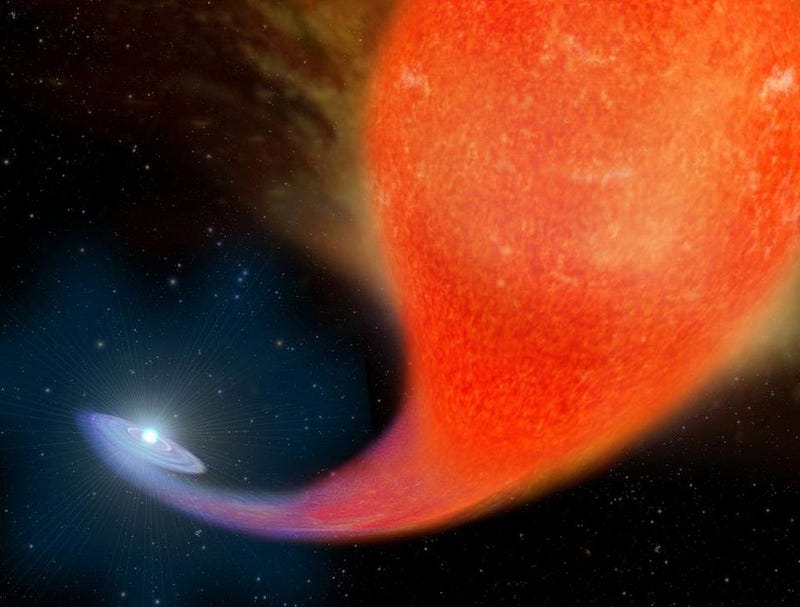
However, it’s no less interesting that the “donor” star has the potential to lose a tremendous amount of mass through this process. In some rare cases, the donor star can lose so much mass that it actually ceases to be a star: falling below the ~0.075 solar mass threshold necessary to initiate and maintain nuclear fusion. Forget about fusing helium into heavier elements, which only occurs at temperatures of around ~100 million K; the star can quickly lose so much mass that its core drops below ~4 million K. Even if there’s hydrogen left in the core, it can no longer fuse.
Such objects can still fuse deuterium — a heavy isotope of hydrogen — making it a point of contention as to whether they should be classified as a high-mass planet or a brown dwarf, but that’s not quite the point. The point is that when enough mass transfer occurs from a star to a stellar remnant, the donor star can actually lose so much mass that it ceases to be a star. To transition from a star, where nuclear fusion was its defining characteristic, to an object without enough mass to initiate and maintain fusion is a remarkable occurrence.
Perhaps even more remarkably, we’ve just discovered three such “former stars” that have now been demoted to mere planets:
- ASASSN-16kr, with a mass of 0.042 Suns,
- ASASSN-17jf, with a mass of 0.060 Suns,
- and SSSJ0522–3505, with a mass of 0.042 Suns.
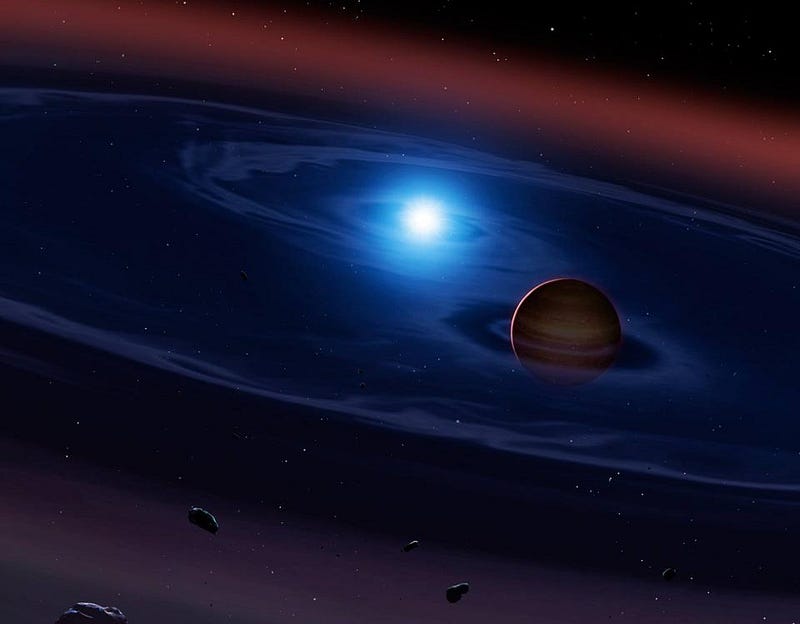
Of the nearly 5,000 known exoplanets, we can now add three former stars to the list: objects whose outer layers were sufficiently stripped away and stolen by a nearby stellar remnant. All three of them are much more massive than Jupiter, but still low enough in mass that they could be considered self-compressed gas giants or super-Jupiter planets. They all orbit their parent remnant at an orbital distance much closer than the Earth-Sun separation distance, and while they could also be classified as brown dwarf stars, they represent the first known instance of stars that have lost enough mass to be demoted to planetary status.
If you want to turn a star back into a planet, we now not only have a recipe for doing so, but have three separate examples to point to where the Universe has done exactly this. Simply take a multi-star system where at least two of the stars are in relatively close, tight orbits with one another, and let them evolve. Eventually, the more massive star will become a stellar remnant, transforming into a dense object like a white dwarf. It can then siphon mass off of the other star, eventually capturing so much that the secondary star loses its stellar status, with insufficient mass to ever fuse hydrogen into helium again.
Not only can the Universe turn stars back into planets, but we’ve found multiple examples of them. The next questions are how low in mass they can go, and just how many of them are out there.
Starts With A Bang is written by Ethan Siegel, Ph.D., author of Beyond The Galaxy, and Treknology: The Science of Star Trek from Tricorders to Warp Drive.





